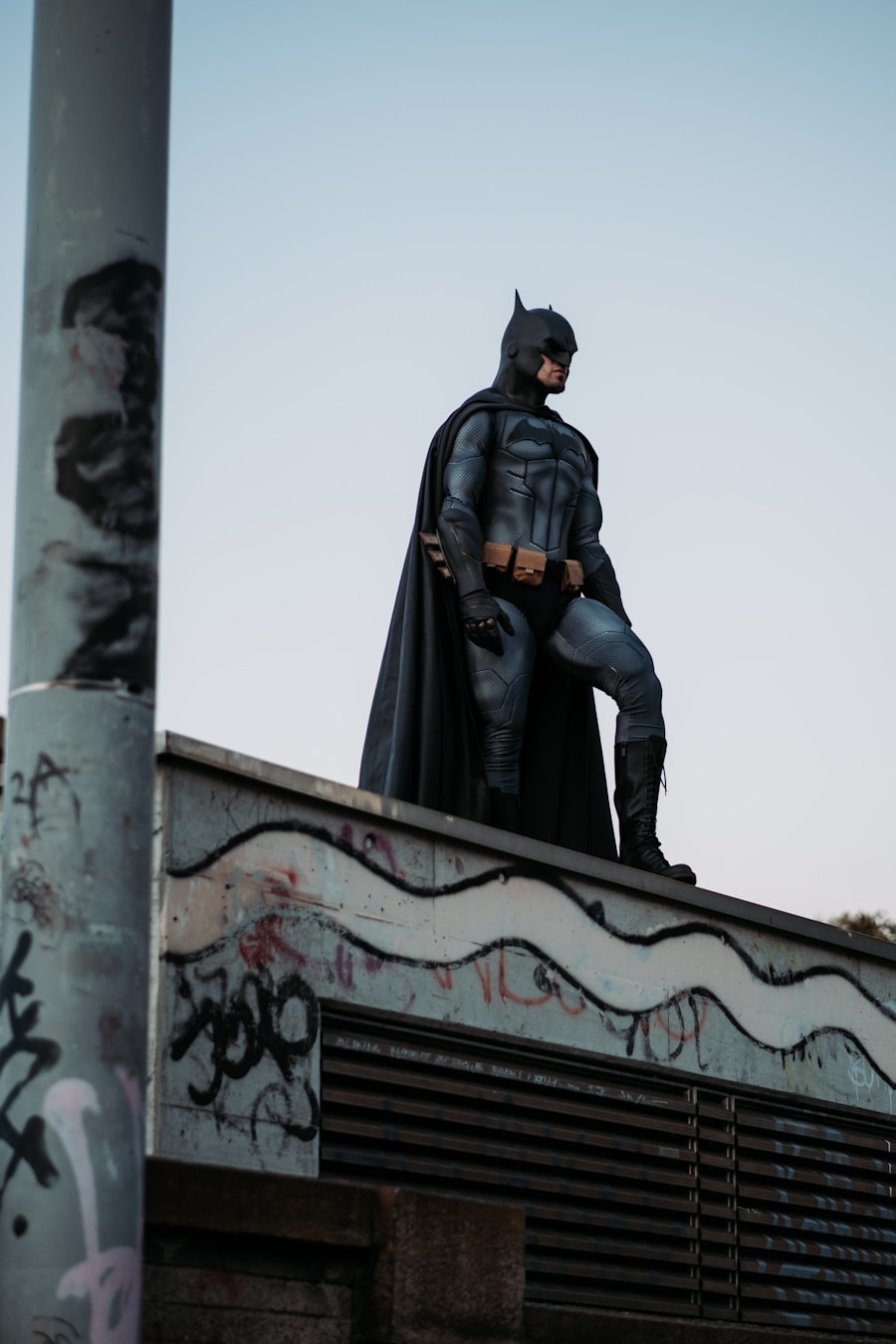In 2016, the superhero movie landscape was vibrant and dynamic, marked by a blend of established franchises and fresh narratives. You could feel the excitement in the air as audiences flocked to theaters, eager to witness the latest adventures of their beloved characters. This year was pivotal, not just for the sheer number of superhero films released, but also for the way these films began to reflect broader societal themes and issues.
The genre was no longer just about capes and powers; it was evolving into a platform for storytelling that resonated with a diverse audience. As you navigated through the cinematic offerings of 2016, you would have encountered a variety of tones and styles. From the gritty realism of “Batman v Superman: Dawn of Justice” to the irreverent humor of “Deadpool,” the year showcased a spectrum of storytelling approaches.
This diversity in tone allowed for a richer exploration of character motivations and moral dilemmas, inviting viewers to engage with the narratives on a deeper level. The superhero genre was not merely a spectacle; it was becoming a mirror reflecting the complexities of modern life.
Key Takeaways
- 2016 saw a diverse range of superhero movies, from traditional to unconventional, shaping the landscape of the genre.
- The rise of diverse superheroes and representation in mainstream cinema marked a significant shift towards inclusivity and representation in superhero narratives.
- Villains and antagonists in superhero movies evolved to become more complex and multidimensional, reflecting a deeper exploration of moral ambiguity and human nature.
- Crossover and team-up films had a significant impact on the genre, creating new opportunities for storytelling and expanding the interconnected superhero universe.
- 2016 superhero movies influenced visual effects and cinematography, pushing the boundaries of technology and creativity in filmmaking.
The Rise of Diverse Superheroes and Representation in Mainstream Cinema
One of the most significant developments in 2016 was the rise of diverse superheroes, marking a crucial step toward representation in mainstream cinema. You witnessed characters from various backgrounds taking center stage, challenging the traditional norms that had long dominated the genre. Films like “Doctor Strange” introduced audiences to a more global perspective, while “Black Panther,” though released later, began to generate buzz for its promise of a predominantly Black cast and crew.
This shift was not just about diversity for diversity’s sake; it was about telling authentic stories that resonated with a wider audience. As you engaged with these films, you could see how representation mattered. It wasn’t just about seeing different faces on screen; it was about the narratives that accompanied them.
Characters like Wonder Woman, who made her debut in “Batman v Superman,” became symbols of empowerment and strength for many viewers. The conversations around these films highlighted the importance of inclusivity in storytelling, paving the way for future projects that would continue to break barriers and challenge stereotypes.
The Evolution of Villains and Antagonists in Superhero Movies

In 2016, the portrayal of villains and antagonists underwent a notable evolution, moving away from one-dimensional characters to more complex figures with relatable motivations. You may have noticed that these villains were no longer simply evil for the sake of being evil; they were often driven by personal experiences or ideologies that made them compelling. For instance, Lex Luthor in “Batman v Superman” was portrayed as a brilliant but deeply flawed individual whose actions stemmed from a desire to protect humanity, albeit through twisted means.
This shift allowed you to engage with the narratives on a more profound level, as you began to empathize with characters who were once relegated to the role of mere adversaries.
Instead, they became integral to the heroes’ journeys, forcing them to confront their own beliefs and values.
This nuanced approach enriched the storytelling landscape, inviting audiences to explore moral ambiguity and the gray areas between good and evil.
The Impact of Crossover and Team-Up Films on the Genre
Crossover and team-up films have become a hallmark of the superhero genre, and 2016 was no exception. You likely felt the thrill of seeing beloved characters from different franchises come together on screen, creating a sense of shared universe that captivated audiences worldwide. “Captain America: Civil War” exemplified this trend, pitting heroes against each other in a conflict that raised questions about loyalty, friendship, and accountability.
This film not only entertained but also sparked discussions about the implications of power and responsibility. The impact of these crossover events extended beyond mere entertainment; they reshaped audience expectations and industry standards. As you watched these films unfold, you could sense a growing anticipation for interconnected storytelling that spanned multiple films and franchises.
This approach encouraged studios to invest in long-term character development and world-building, ultimately leading to richer narratives that kept viewers engaged over time. The success of these team-up films solidified their place in the genre, setting a precedent for future cinematic endeavors.
The Influence of 2016 Superhero Movies on Visual Effects and Cinematography
The visual effects and cinematography in superhero movies saw remarkable advancements in 2016, pushing the boundaries of what was possible on screen. You may have marveled at the stunning visuals in “Doctor Strange,” where mind-bending realities and intricate magical battles were brought to life with groundbreaking effects.
As you explored these cinematic landscapes, it became clear that visual effects were no longer just about spectacle; they were integral to storytelling. The seamless integration of CGI with practical effects allowed filmmakers to create worlds that felt both fantastical and grounded. This evolution in visual storytelling set new standards for future superhero films, encouraging creativity and innovation in how stories were told on screen.
You could see how these advancements influenced not only superhero movies but also other genres, as filmmakers began to experiment with new techniques and technologies.
The Shift in Tone and Style in Superhero Movies

The tone and style of superhero movies experienced a significant shift in 2016, reflecting changing audience preferences and cultural contexts. You might have noticed a move towards darker themes and more mature storytelling, particularly in films like “Batman v Superman.” This shift allowed for deeper explorations of character psychology and moral dilemmas, inviting viewers to grapple with complex issues rather than simply enjoying lighthearted escapism. Conversely, films like “Deadpool” embraced irreverence and humor, showcasing that superhero narratives could be both entertaining and subversive.
This duality in tone provided audiences with a broader range of experiences, catering to different tastes while still maintaining core superhero elements. As you engaged with these films, you could appreciate how they pushed boundaries and challenged conventions, ultimately enriching the genre as a whole.
The Effect of 2016 Superhero Movies on Box Office Performance and Franchise Building
The box office performance of superhero movies in 2016 demonstrated their undeniable appeal and profitability. You likely observed how films like “Captain America: Civil War” shattered records, drawing massive audiences eager to see their favorite heroes in action. This success not only validated the genre’s popularity but also reinforced the idea that superhero films were essential components of modern cinema.
As you reflected on this trend, it became evident that franchise building was at the forefront of studio strategies. The interconnected nature of these films encouraged viewers to invest emotionally in characters over multiple installments, creating a loyal fan base eager for more content. This approach allowed studios to cultivate expansive universes filled with rich narratives and character arcs that spanned years.
You could see how this model influenced not only superhero films but also other genres seeking to replicate this success through sequels and spin-offs.
The Lasting Legacy of 2016 Superhero Movies on the Genre
As you look back on the superhero movies of 2016, it’s clear that they left an indelible mark on the genre’s evolution. The rise of diverse superheroes brought representation to the forefront, challenging industry norms and inspiring future filmmakers to tell stories that resonate with broader audiences. The evolution of villains added depth to narratives, inviting viewers to explore complex moral landscapes rather than adhering to simplistic good-versus-evil tropes.
The impact of crossover films reshaped audience expectations, setting new standards for interconnected storytelling that continues to influence cinematic universes today. Meanwhile, advancements in visual effects transformed how stories are told on screen, pushing creative boundaries and enhancing viewer experiences. The shift in tone allowed for richer explorations of character psychology while catering to diverse audience preferences.
Ultimately, 2016 served as a pivotal year that not only celebrated the superhero genre but also challenged it to grow and adapt. As you reflect on this legacy, it’s evident that the films released during this time will continue to influence future projects, shaping how stories are told within this beloved genre for years to come.
If you’re a fan of larger-than-life characters like Godzilla, you may also be interested in exploring the long-term impact of superhero movies in 2016. This article on Godzilla vs. Superman delves into the power dynamics of these iconic figures and how they have redefined their respective genres. It’s a fascinating read that offers a fresh perspective on the world of superheroes and monsters.
FAQs
What superhero movies were released in 2016?
In 2016, several superhero movies were released, including “Deadpool,” “Batman v Superman: Dawn of Justice,” “Captain America: Civil War,” and “X-Men: Apocalypse.”
How did these superhero movies redefine the genre?
These superhero movies redefined the genre by pushing boundaries in terms of storytelling, character development, and visual effects. They also explored darker and more complex themes, appealing to a wider audience.
What was the long-term impact of these superhero movies?
The long-term impact of these superhero movies includes influencing the direction of future superhero films, setting new standards for box office success, and expanding the fan base for superhero genre.
Did these superhero movies have any cultural impact?
Yes, these superhero movies had a significant cultural impact by sparking discussions about morality, power, and responsibility. They also inspired a new wave of superhero fandom and merchandise.
How did these superhero movies affect the film industry?
These superhero movies had a major impact on the film industry by demonstrating the profitability of the superhero genre and influencing the production of future superhero films. They also raised the bar for special effects and action sequences.
